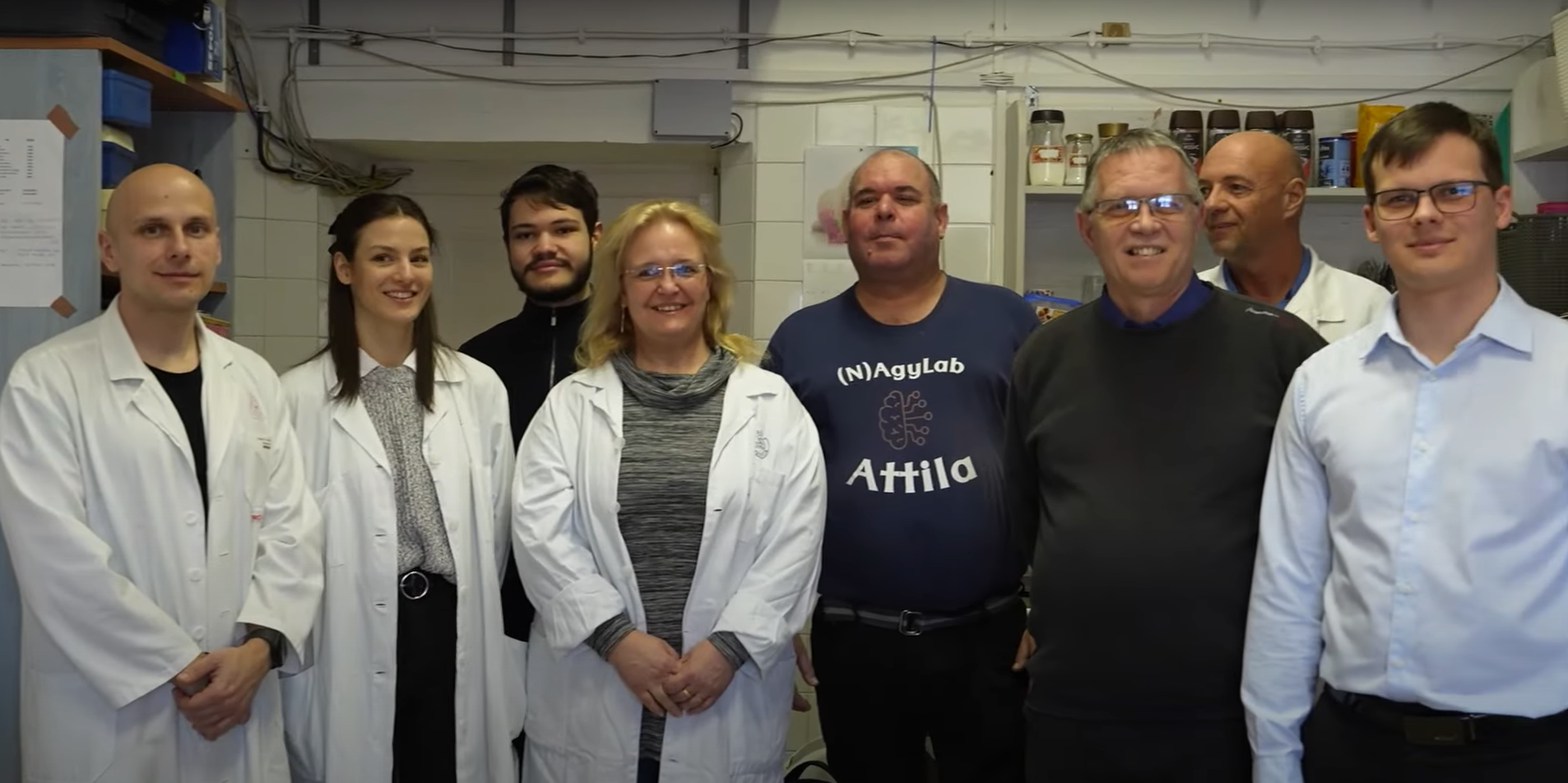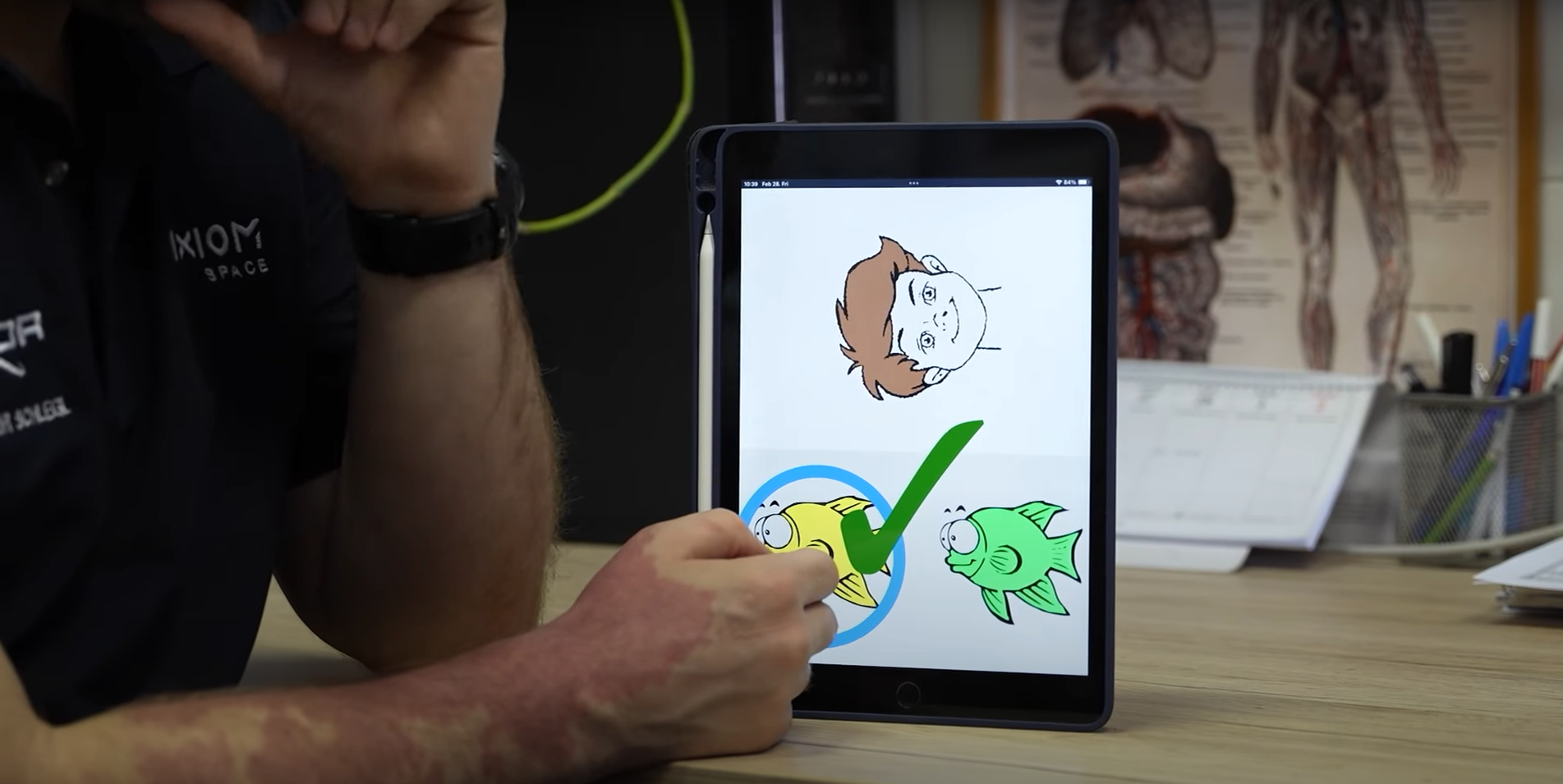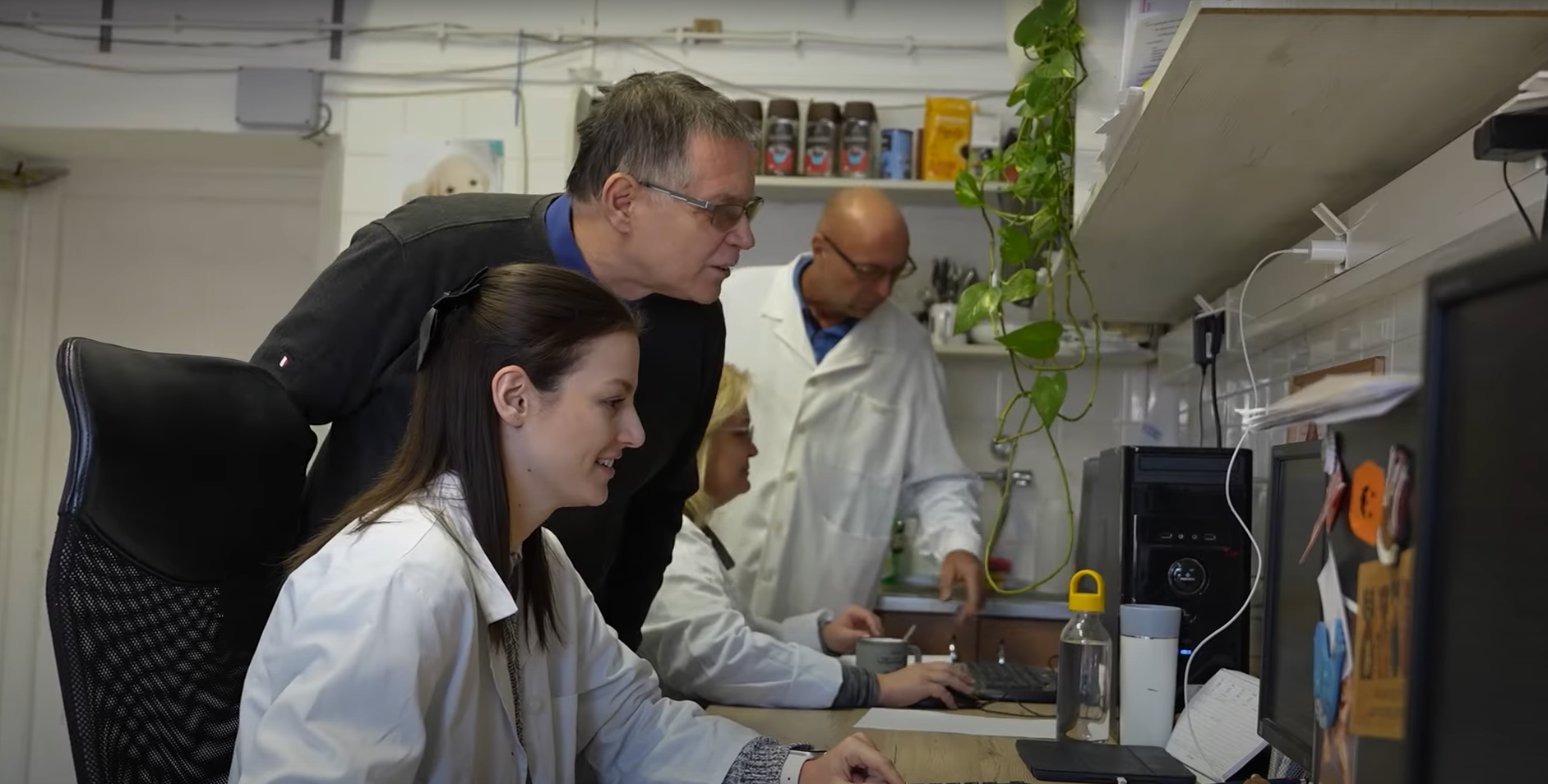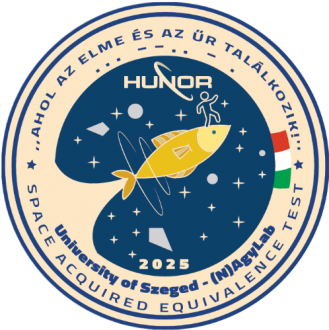When a Hungarian astronaut was sent to the International Space Station as part of the HUNOR Program, not only did the dream of space travel become a reality, but new opportunities for scientific discovery opened up as well. The research team that includes Dr. Gabriella Eördegh conducted a unique experiment in space to explore whether the process of learning changes in a microgravity environment. We spoke with the associate professor of the Faculty of Health Sciences and Social Studies at the University of Szeged about the details of the research, the Acquired Equivalence Learning Test, and the potential applications of this space experiment here on Earth.
How did your team become involved in the HUNOR Hungarian Astronaut Program?
When we found out that a Hungarian astronaut would be sent into space under the HUNOR program to conduct experiments aboard the International Space Station, we immediately submitted our research proposal. The astronaut carried out 25 experiments in total, one of which—our Acquired Equivalence Learning Test, or SAET (Space Acquired Equivalence Test)—was developed by our team. We had to act quickly: the application deadline was tight, and we needed to complete all the necessary authorization procedures in time. Our project had to be approved and supported not only by the HUNOR Program, but also by the European Space Agency and NASA. The six months prior to issuance were therefore filled with intense preparation and administrative work.
How long have you been part of this research group, and what is the main scientific background of your work?
I have been working at the Neurocognitive and Electrophysiological Unit of the Department of Physiology at the Albert Szent-Györgyi Medical School, University of Szeged, for 26 years—since 1999. Our group has been continuously expanding, involving more and more students, and we work simultaneously on several research topics. However, the development of the microgravity-adapted version of the Acquired Equivalence Learning Test was carried out by a smaller, seven-member team. Acquired equivalence learning is a special type of associative learning, and we have been studying it for about ten years. The original focus of our group’s research is the functioning of the basal ganglia in both humans and animals. The basal ganglia are clusters of gray matter embedded deep within the brain’s white matter, playing a crucial role in movement. Their dysfunction is therefore linked to movement disorders such as Parkinson’s disease or Huntington’s chorea. Beyond motor functions, the basal ganglia are also connected to cognitive and emotional processes, contributing to learning mechanisms. Consequently, abnormal functioning of the basal ganglia may be involved in several psychiatric conditions, including obsessive-compulsive disorder, depression, Tourette’s syndrome, ADHD, and autism spectrum disorders.

What is the “Acquired Equivalence Learning Test” about?
For our research, we use a test originally developed in 2003 by Catherine E. Myers and her colleagues at Rutgers University, New Jersey. We obtained the necessary authorization to use it and have since further refined and adapted it several times. The basic task involves learning to associate human faces with colorful fish drawings. The test consists of antecedent and consequent stimuli. In our version, the antecedent stimulus is a face image that appears on the screen, followed by two fish symbols of different colors displayed below it. Participants must decide which color fish corresponds to the given face by pressing either the left or right button. In the first phase, participants can guess freely, and based on the computer’s feedback, they gradually learn the correct associations. This phase measures learning efficiency—specifically, how many repetitions are required to master all the pairings. In the second phase, participants again see faces and fish, but the computer no longer provides feedback. Moreover, some of the combinations presented are new, previously unseen pairings. This part of the test examines how effectively participants can recall what they have learned and how well they can apply the learned associative rules to novel stimuli they have not encountered before.

How did you further develop the test?
Our primary goal was to create EEG-compatible software, allowing us to record cortical electrical activity during the learning task. In addition, we developed a multisensory (audiovisual) version that incorporates not only images but also sounds — such as human and animal voices, vehicle noises, and musical instrument tones. We also designed another version in which we simplified the visual stimuli: the human faces and fish used in the original task were replaced with grayscale circles and simple geometric shapes, so that we could examine how this change affects performance. Beyond these, several new versions are in progress. We plan to test the paradigm using multiple consequent stimuli, as well as replacing the currently used meaningful sounds with simple noises. We have applied the acquired equivalence learning paradigm not only to healthy adults and children, but also to individuals with neurological and psychiatric conditions such as migraine, borderline personality disorder, obsessive-compulsive disorder, and Tourette’s syndrome.
What scientific questions did you aim to investigate through the space experiment?
When the opportunity arose to conduct an experiment indirectly in space, we wanted to identify a central research question—one that fit within our field of study and was exciting enough to become the focus of our project. Even in itself, it is a fascinating question how this form of learning might change in microgravity, or in everyday terms, weightlessness. We were interested in whether the spaceflight, the launch process, the adaptation to life in orbit, and the altered environmental conditions have any effect on this type of learning. Thus, our main question became: How does spaceflight influence acquired equivalence learning processes that involve simple and complex visual stimuli? We also added an extra twist to the test. Under terrestrial conditions, it is obvious what counts as vertical, what is up and down—for example, we usually see faces in an upright orientation. For this so-called spatial orientation, the brain relies on information from the vestibular system in the inner ear, which is stimulated by gravity. However, in a microgravity environment, this input disappears. One of our main research questions, therefore, was to examine the impact of this absence. We tested it by rotating the face images—which participants had to associate with the colored fish drawings—into horizontal and upside-down vertical orientations. We are curious to find out how essential gravitational input is for successfully navigating such complex cognitive situations as those presented by the SAET.

Have any results been obtained so far?
The software we regularly use in our laboratory had to be redesigned to ensure reliable operation in a special, industrial environment—in this case, on the International Space Station. We made the software iPad-compatible, and we also set up a server at the university through which the data from the space experiments could be transmitted to us. The fact that all of this worked successfully can already be considered a significant achievement in itself. The astronaut completed the learning tests seven times: before the launch, during the mission on the International Space Station, and after returning to Earth. In parallel, under terrestrial conditions, 21 learning sessions were conducted. As a result, we now have all the necessary data; however, processing them is complex, and the development of the required analytical software is still underway. In addition, we carried out several control experiments on a larger group of volunteers under Earth conditions. For these studies, we even received equipment support from the Department of Nursing at the Faculty of Health Sciences an Social Studies, enabling us to involve as many participants as possible within the limited time available. If everything proceeds according to plan, we expect to publish our findings by early to mid-next year.
How could this research be applied in everyday life on Earth?
Our study will help reveal the role of vestibular (balance-related) information in this type of learning process. Furthermore, the results may also be useful for training future astronauts, providing insights into how the human brain adapts to the challenges of microgravity.

How was the experiment prepared, and who were involved in the process? Did you encounter any challenges along the way?
Our research group is led by Dr. habil. Attila Nagy, who coordinated the entire process. Dr. Balázs Bodosi, Dr. András Kelemen, and Ádám Kiss were responsible for the software development—they adapted the program for use on the iPad and ensured that it functioned reliably even in the unique environment of space. I, together with Noémi Harcsa Pintér, supported the project’s progress through continuous testing of the developments. Our team members work in close collaboration, contributing to every stage of the research. For instance, I also took part in designing and testing the new experimental paradigm, organizing the control measurements on Earth, and I will be actively involved in analyzing and interpreting the data, as well as in writing the final publication. Once we decided to submit our proposal, we made this project our top priority. Although perfecting the research program and obtaining the necessary authorizations was an exhausting process—with tight deadlines and the initial stages coinciding with the Christmas holidays of 2024—it was worth every minute.
Why did you choose to pursue a career in research?
I’ve known since kindergarten that I wanted to become a researcher, and I was always fascinated by biology. At first, I wanted to be a marine biologist, but eventually, my curiosity about how the brain works became stronger. Alongside my degree in biology, I also completed studies in psychology, because I felt that the biology program at the time didn’t provide me with enough insight into brain function. Combining these two fields has given me a much broader perspective, and over the past ten years of research, I’ve been able to make great use of the knowledge and methods drawn from both disciplines—which, though seemingly distant, actually have many deep and meaningful connections.

Imola Prokes





